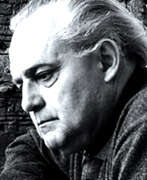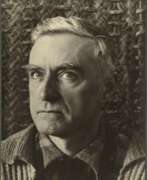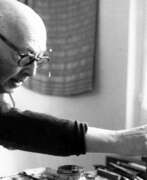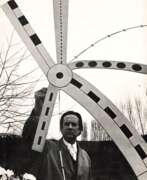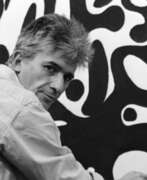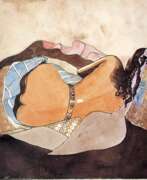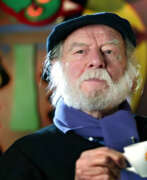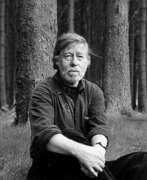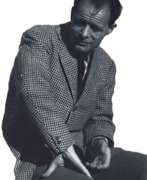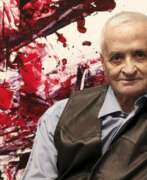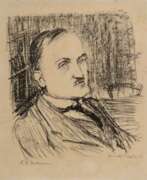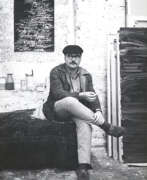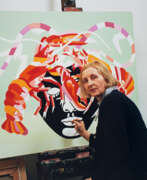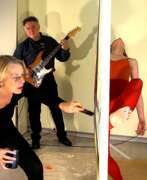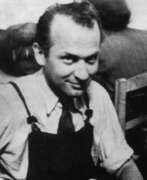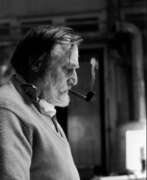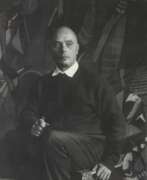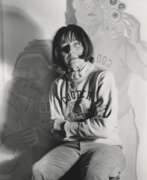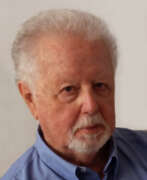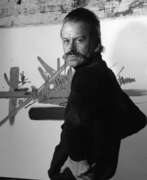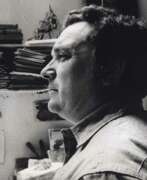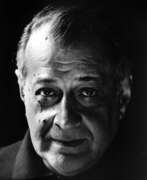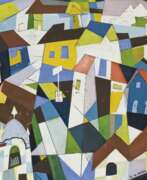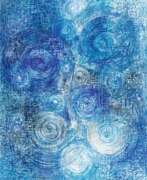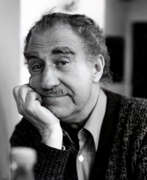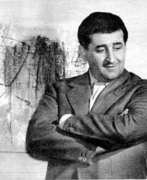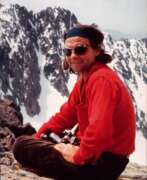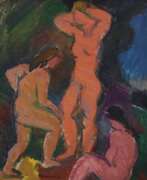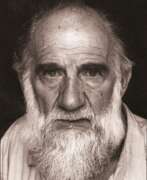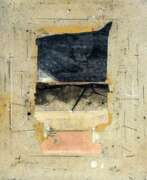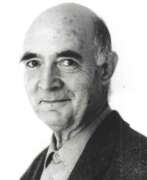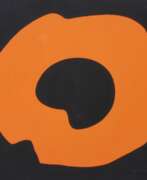Painters Informalism
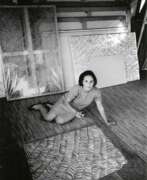

Carla Accardi was an Italian abstractionist painter associated with the Arte Informel and Arte Povera movements and a founding member of the art groups Forma (1947) and Continuità (1961). She studied painting at the Academy of Fine Arts in Palermo and Florence.
Carla Accardi was known for her innovative use of materials and her exploration of geometric shapes and vivid colours. One of her notable contributions was the introduction of the "tela intrecciata" (interwoven canvas) technique, in which she used strips of coloured canvas to create textured and layered compositions.
Accardi's work often exhibited a sense of rhythm and movement, a dynamic arrangement of forms and lines. Her compositions are characterised by a sense of balance and harmony and often incorporate elements of repetition and symmetry.


Christiaan Karel Appel was a Dutch painter, sculptor, and poet. He started painting at the age of fourteen and studied at the Rijksakademie in Amsterdam in the 1940s. He was one of the founders of the avant-garde movement CoBrA in 1948. He was also an avid sculptor and has had works featured in MoMA and other museums worldwide.
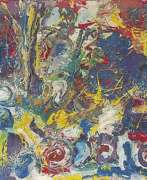

Ernst Rudolf Baerwind was a German painter. Baerwind studied at the art academies in Munich, Berlin and Paris. Baerwind's work was initially based on early German Expressionism. After a surrealist phase, he was influenced in Paris by the painting of the École de Paris and by Informel and then found his way to the International Style.
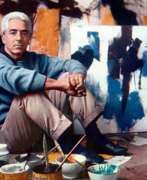

Afro Basaldella was an Italian abstractionist painter, a representative of lyrical abstraction, better known as Afro.
Afro's father and uncle were decorators, his two older brothers became sculptors, and to avoid confusion with surnames, the artist began signing his works with his first name only. Bazaldella trained in Florence, Venice and Rome. Shortly after graduation, his first monographic exhibition was held in Milan.
From 1935, Afro exhibited regularly at the Quadrennale in Rome and the Biennale in Venice. He made frescoes, notably for the Udine Opera House, and mosaics, and tried his hand at painting in a variety of directions. In 1941 he became a lecturer in mosaic painting at the Venice Academy of Fine Arts, and in 1950 he caused a sensation in the United States, and by the mid-1950s Afro's art was world famous.
Afro interpreted the Italian tradition in a modern abstract form that resulted from his painterly studies of color harmony.


Detlef Beer is a German artist who lives and works in Bonn.
Since the mid-1990s Detlef Beer has turned to yellow, blue, red and gray, exploring their influence and how they are understood - regardless of objective location or even emotional aspects. The result is works that merge color-field painting, constructivism, and informel. In Beer's latest works, the panel is transferred to the wall, which also becomes the basis for the painting. As a result, not only do the work and the ground communicate with each other, but so do the forms of art and architecture.
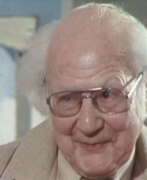

Francis Bott war als deutscher Maler ein Vertreter der „Zweiten École de Paris“, also des französischen „Informel“. Sein künstlerisches Schaffen weist zwei scheinbar gegensätzliche Schwerpunkte auf: surreale, phantastische Gegenständlichkeit und tachistisch, geometrische Abstraktion. Sein Werk besteht aus Gemälden, Glasmalereien, Handzeichnungen, Aquarellen, Gouachen, Plastiken und Objekten; auch als Bühnenbildner hat er sich betätigt.
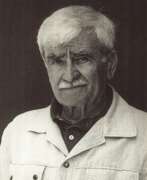

Alberto Burri was an Italian visual artist, painter, sculptor, and physician based in Città di Castello. He is associated with the matterism of the European informal art movement and described his style as a polymaterialist. He had connections with Lucio Fontana's spatialism and, with Antoni Tàpies, an influence on the revival of the art of post-war assembly in America (Robert Rauschenberg) as in Europe.


Giuseppe Capogrossi was an Italian painter.
In the years following World War II, Capogrossi's work changed in favour of a more abstract style. His work was part of the painting event in the art competition at the 1948 Summer Olympics.
Capogrossi subsequently became one of the main exponents of Italian informal art, together with Lucio Fontana and Alberto Burri.


Alfredo Chighine was an Italian painter and sculptor of the Informel movement.
His art has evolved from early scribbled lines to vivid and lively precision paintings. In recent years Chighine has achieved his main goal: brightness, surface texture and flowing lines.
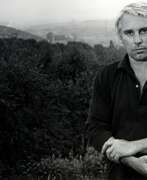

Karl Fred Dahmen is a German artist, one of the most important representatives of German post-war art and the Informel movement. In 1967 he took up the post of Professor of Fine Arts at the Munich Academy.
He painted expressive abstract pictures with a tectonic structure, and since the mid-1950s, relief paintings and collages on the damage to the local landscape caused by open-pit mining. Later in Dahmen's oeuvre, glazed object boxes appear, recounting the impressions of his daily working life.
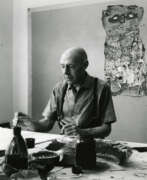

Jean Philippe Arthur Dubuffet, a pioneering French painter and sculptor, revolutionized the post-war art scene with his radical Matterism movement. He defied the conventional aesthetics of his time, championing "low art" and propelling a more genuine, humanistic image-making approach.
Dubuffet, born in Le Havre, France, in 1901, was a prominent figure at the Ecole de Paris and an advocate for Art Brut, or "raw art", which sought to capture art's purest form. His works were characterized by a rough, unrefined aesthetic, which eschewed academic norms in favor of spontaneity and authenticity.
Art enthusiasts and experts can view Dubuffet's innovative works at institutions like the Museum of Modern Art, where his legacy as a groundbreaking artist continues to be celebrated. His Matterism philosophy has left an indelible mark on the art world, inspiring generations of artists to embrace the beauty in the unconventional.
For those interested in the avant-garde and the legacy of Jean Philippe Arthur Dubuffet, sign up for our exclusive updates. This service is designed for connoisseurs and professionals in the art and antique sector, promising alerts on new insights and events strictly related to Dubuffet's profound influence.
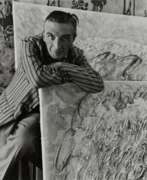

Jean Fautrier was a French painter and sculptor associated with the Art Informel and Tachisme movements. He initially studied architecture before turning to painting in the early 1920s.
Fautrier's early work was influenced by Cubism and Surrealism, but he eventually developed a more abstract style characterized by thick impasto and expressive brushwork. He often used unconventional materials, such as asphalt, sand, and tar, to create textured surfaces that conveyed a sense of materiality.
During World War II, Fautrier was active in the French Resistance and went into hiding to avoid arrest by the Nazis. His experiences during the war had a profound impact on his work, which became darker and more introspective. He began to create what he called "Hostage" paintings, which depicted anonymous faces and figures that were both haunting and vulnerable.
After the war, Fautrier continued to explore themes of violence, trauma, and decay in his art. He created a series of "Otages" (Hostages) sculptures that were made from casts of human limbs and torsos. These works were highly controversial and provoked strong reactions from critics and the public alike.
Fautrier's influence on the development of Art Informel and Tachisme was significant, and he is regarded as one of the key figures of the movement. His work is represented in many major museums and collections around the world, including the Centre Georges Pompidou in Paris and the Museum of Modern Art in New York.


Karl Otto Götz was a German artist, filmmaker, draughtsman, printmaker, writer and professor of art at the Kunstakademie Düsseldorf. He was one of the oldest living and active artists older than 100 years of age and is best remembered for his explosive and complex abstract forms. His powerful, surrealist-inspired works earned him international recognition in exhibitions like documenta II in 1959. Götz never confined himself to one specific style or artistic field. He also explored generated abstract forms through television art. Götz is one of the most important members of the German Art Informel movement.
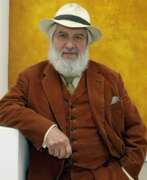

Gotthard Graubner was a German abstract painter associated with the post-war Zero and Informel movements. Graubner's work is known for its focus on color and its relationship to space and perception.
Graubner studied at the Kunstakademie Düsseldorf under the painter Georg Meistermann. In the 1950s, he became associated with the Zero group, a movement of artists who sought to create a new art form that was free of traditional artistic conventions and focused on the use of unconventional materials.
In the 1960s, Graubner began creating his signature "color-space bodies," large canvases that were mounted away from the wall and filled with thick layers of pigment. These works were designed to be experienced as three-dimensional objects that were both paintings and sculptures, and they often created a sense of depth and spatial ambiguity.
Graubner's work was exhibited widely in Europe and the United States, and he was the recipient of numerous awards and honors throughout his career. He also taught at several art schools, including the Kunstakademie Düsseldorf and the Städelschule in Frankfurt.
Graubner's innovative approach to painting and his exploration of the relationship between color, space, and perception continue to be an important influence on contemporary art.
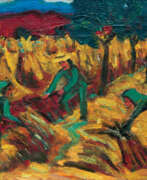

Walter Helbig is a German and Swiss painter, graphic designer and woodcarver. He works in Dresden on church paintings. Helbig participated in the founding and first exhibition of the "Neue Secession" in Berlin in 1910. Helbig took part in the first Modern Bund exhibition in 1911 in Lucerne and in the second, larger one, at the Kunsthaus in Zurich. In 1914, some painters from the vanished “Modern Bund”, including Helbig, took part in the first Dada exhibition at the Galerie Coray in Zurich. Helbig is also represented in the third Dada exhibition and contributes to the magazine Der Zeltweg 8 but does not participate in the activities of the Dadaists. In 1919, he was one of the signatories of the “manifesto of radical artists” 9 in Zurich, and joined the “November group” in Berlin. Helbig lived in Zurich from 1916 to 1924 and in 1916 became a member of the GSMBA (Society of Swiss Painters, Sculptors and Architects), in which he regularly participated. Since the First World War, his artistic work has turned to religious and mythical subjects. In 1924 Helbig, like many other artists, moved to Ascona due to the low cost of living and founded the movement Der Große Bär. During this time, Helbig painted landscapes, still lifes and portraits. Walter Helbig had his first major solo exhibition in Zurich in 1948 and became a member of the Association of German Artists in 1952. After the Second World War, he also followed the artistic currents of the time, abstract expressionism and experimented with informal art in the 1960s.


Patrick Heron was a British abstract and figurative artist, critic, writer, and polemicist, who lived in Zennor, Cornwall.
Heron was recognised as one of the leading painters of his generation. Influenced by Cézanne, Matisse, Braque and Bonnard, Heron made a significant contribution to the dissemination of modernist ideas of painting through his critical writing and primarily his art.
Heron's artworks are most noted for his exploration and use of colour and light. He is known for both his early figurative work and non-figurative works, which over the years looked to explore further the idea of making all areas of the painting of equal importance. His work was exhibited widely throughout his career and while he wrote regularly early in his career, notably for New Statesman and Arts New York, this continued periodically in later years.
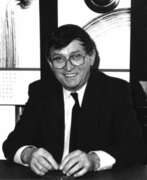

Oskar Holweck was a German painter and sculptor on paper.
After World War II, in which he went to the front and into captivity, Holweck studied applied art at the Paris Academy of Fine Arts, worked as a teacher, and was a member of the German Artists Association.
Since the 1960s, Holweck has created artworks almost exclusively with his own paper technique. Through various manipulations with this material, the artist actually created sculptures.


Rolf Iseli is a Swiss avant-garde artist living and working in Bern.
At the beginning of his artistic career, Iseli was a radical representative of Taschism and the Informel movement, and also painted in gesture technique. During his long life he has worked in different fields: painting, collage, drawing, lithography, drawing, plastic art, sculpture and art in architecture. Rolf Iseli is one of the most important representatives of the Swiss artistic avant-garde of the second half of the 20th century.
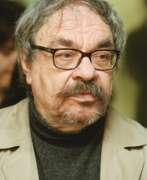



Edmund Kesting was a German photographer, painter and art professor.
He formed relations with other vanguardists in Berlin and practiced various experimental techniques such as solarization, multiple images and photograms, for which reason twelve of his works were considered degenerate art by the Nazi regime and were prohibited. Among the artists with whom he interacted are Kurt Schwitters, László Moholy-Nagy, El Lissitzky and Alexander Archipenko.


Tschang-Yeul Kim is a South Korean abstraction artist, one of the most famous figures in the history of modern Korean art.
He lived most of his life in Paris, France, where he developed his own unique style of painting. Tschang-Yeul Kim painted paintings with a variety of water droplets that appear to protrude from the canvases as if the canvas were "crying," but are in fact optical illusions.


Günther C. Kirchberger was a German painter and professor. He was a Hard Edge painter and a close friend to Lawrence Alloway. Together with Georg Karl Pfahler Kirchberger was the founder of the gruppe 11.
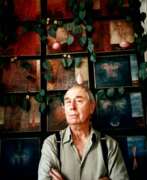

Josef Lehoucka is a Czech surrealist and abstractionist painter.
A close connection between realism and fantasy is a characteristic feature of Josef Lehoucka's paintings. In his youth he was a factory worker, a crane operator, which was reflected in his visual art. Lehoucka often painted fantastically realistic paintings, which he complemented with industrial motifs. His past experiences are recalled in replicas of machines, tongs, and cylinders, geometrized and incorporated into abstract compositions. Against this mechanized reality, however, the Surrealist tradition is strong, bringing elements of chance and the unexpectedness of dreamlike objects and landscapes into the paintings.
Josef Lehoucka's works are represented in the collections of the National Gallery of Prague, the Central Czech Gallery of Prague and others.


Henri Michaux is a French poet and artist associated with Surrealism and the post-war avant-garde movement.
Michaux's early artistic endeavours revolved around writing and poetry. In his poetry he explored themes of existentialism, spirituality and the human condition, often experimenting with language and form. His writing style was characterised by introspection, the exploration of consciousness and the search for meaning.
In 1925, after a Surrealist exhibition he saw in Paris, Henri Michaux began to paint and draw. His visual arts encompassed a wide range of styles and techniques. Michaux experimented with ink, watercolour and oil paintings, creating evocative and energetic compositions. His works often conveyed a sense of movement, rhythm and spontaneity and were influenced by the aesthetics of calligraphy and gesticulation.
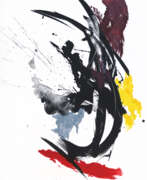

Jean Miotte was a French abstract painter, in the style known as L'Art Informel. His work was preserved and studied by the Miotte Foundation and is in the collections of museums including: MoMA and the Guggenheim in New York, Musée d'Art Moderne de Paris and Haus der Kunst in Munich.


Edo Murtić was a painter from Croatia, best known for his lyrical abstraction and abstract expressionism style. He worked in a variety of media, including oil painting, gouache, graphic design, ceramics, mosaics, murals and theatrical set design. Murtić travelled and exhibited extensively in Europe and North America, gaining international recognition for his work, which can be found in museums, galleries and private collections worldwide. He was one of the founders of the group "March" (Mart) in 1956, and received many international awards. In 1958 Murtić participated in the three biggest events in the world of contemporary art: the Venice Biennale, the Carnegie Prize in Pittsburgh, and Documenta in Kassel. Interest in the art of Edo Murtić continues to grow, with retrospective exhibits in major museums.
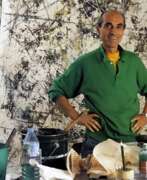

Georges Noël was a French artist, a representative of French informel.
In the mid-1950s he moved to the United States and began to create works in impasto, or, as he called them, palimpsests.
Palimpsests are old handwritten pages that have been partially scraped and then reused. Georges Noël uses the concept of palimpsest and creates his canvases with sand, crushed silica and raw pigment, giving each work a three-dimensional and energetic feel.
Georges Noël was a professor at the Minneapolis School of Art before returning to Paris.
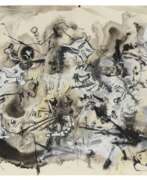

Hans Platschek was a German artist, art critic and writer.
Hans Platschek gained recognition as an artist of Tachism or Informel. But by the time the abstract, automatic art of Informel had gained international recognition, he had already shown an interest in the new figuration. He was fiercely critical of pop art as 'consumer art'.
Placzek's essays, which only on the surface appear to be polemical, made him a household name among the art interested public outside Germany from the 1960s onwards. Even today many connoisseurs consider his texts to be of great freshness and clarity.
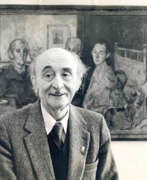

Miodrag Mića Popović (Serbian: Миодраг Мића Поповић) is a Serbian artist and filmmaker.
Popović studied at the Academy of Fine Arts in Belgrade, and has had solo exhibitions since 1952. He painted in the Informalist style, associative abstract landscapes in a combined technique, sometimes placing fragments of other materials in the structure of the painting.
In 1947 Popović formed the famous "Zadar Group", whose work was initially considered destructive by the authorities.
In the 1960s, Popović made several films for which he wrote the scripts himself. He became a permanent member of the Serbian Academy of Sciences and Arts in 1985, and since 1987 an associate member of the Academy of Arts in Berlin, and is the recipient of numerous awards.


Markus Prachensky is an Austrian artist, one of the leading figures of the Austrian avant-garde and a representative of the Informel and Tachisme styles.
Originally influenced by Piet Mondrian, Prachensky developed his typical visual language in 1956. In the same year, together with Wolfgang Hollega, Josef Mikl and Arnulf Rainer, he founded the artist group St. Stephan (Gruppe St. Stephan).
Prachensky lived and worked alternately in Paris, Vienna, Berlin and Los Angeles. He returned to Europe in 1970 and was director of the painting master class at the Academy of Fine Arts from 1983 to 2000.
Keeping with formal expression, for many years the artist used only a fierce, irresistible red. Later he included green, purple, black and brown, and yellow in his painting palette. The main elements of many of his paintings are vertical stripes with layers of color superimposed on them.


Jean-Paul Riopelle was a Canadian painter and sculptor from Quebec. He had one of the longest and most important international careers of the sixteen signatories of the Refus Global, the 1948 manifesto that announced the Quebecois artistic community's refusal of clericalism and provincialism. He is best known for his abstract painting style, in particular his "mosaic" works of the 1950s when he famously abandoned the paintbrush, using only a palette knife to apply paint to canvas, giving his works a distinctive sculptural quality. He became the first Canadian painter since James Wilson Morrice to attain widespread international recognition.
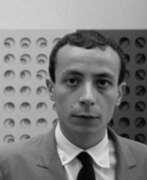

Paolo Scheggi is an Italian constructivist artist, designer and architect.
Scheggi was educated in Florence at the Academy of Fine Arts, initially studying Art Informel and New Dadaism techniques, but quickly developed his own style. He worked with Lucio Fontana and joined the New Trends movement in 1965.
Scheggi became best known for his layered monochromatic works. He was involved in journalism and poetry and worked on architectural urban projects. Scheggi also designed a new Milan fashion house for the famous designer Germana Marucelli.
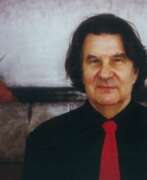

Hans Schreiner was a German painter and stained glass artist.
Hans Schreiner, a graduate of the Stuttgart Academy, in the mid-1950s became a member of the Group of 11, which also included Atila Biro, Günter K. Kirchberger, Friedrich Sieber and Georg Karl Pfahler. The artist called himself an abstract landscape painter, he used, among other things, the Informel style to create symbolic imagery. In addition to painting,
Schreiner also designed stained glass windows and structures for churches. He was a member of the Association of German Artists and actively participated in exhibitions.


Max Schulze is a German artist. Max Schulze studied free art/painting at the Düsseldorf Art Academy from 1999 to 2005. In 2004 he became a master student of Jörg Immendorff. Schulze is co-editor of the art magazine schwarzweiss-eins/-zwei/-drei/-vier in Düsseldorf. In his work he deals with the artistic extension of painterly practice. Max Schulze is one of the two sons of the painter Memphis Schulze. He lives and works in Dusseldorf.


Emil Schumacher was a German painter. He was an important representative of abstract expressionism in post-war Germany.
In 2009 the Kunstquartier Hagen was inaugurated combining the Karl Ernst Osthaus-Museum Hagen as well as the newly built Emil Schumacher Museum in one Museum complex.
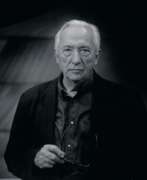

Pierre Soulages was a French painter, printmaker, and sculptor. In 2014, François Hollande described him as "the world's greatest living artist."
Soulages is known as "the painter of black," owing to his interest in the colour "both as a colour and a non-colour. When light is reflected on black, it transforms and transmutes it. It opens a mental field all its own." He saw light as a work material; striations of the black surface of his paintings enable him to reflect light, allowing the black to come out of darkness and into brightness, thus becoming a luminous colour.


Herbert Spangenberg was a German painter of the Lost Generation.
Stylistically, Spangenberg's early work can be classified as New Objectivity, especially Magical Realism, although some of his works have Surrealist features. While his pictures in the late 1920s were achromatic and dark, from the 1930s they turned to colourfulness and brightness. From the late 1940s onwards, his style increasingly turned to abstract painting with a gradual abandonment of the object. In 1952 he exhibited a completely abstract painting in Cologne, but his pictures usually contain geometric forms, sometimes also formal structures, as in the painting Zug der Fische. The Synagogue Windows of 1960 could again be assigned to Geometric Abstraction, if symbols were not incorporated. In his late work, from 1968 onwards, he mainly created women's pictures influenced by Pop Art or Art Deco in dark tones, whose painted faces are occasionally grotesquely satirically exaggerated, as in some pictures of the Verism of the New Objectivity in the 1920s. Now and then they are slightly reminiscent of figures by Richard Lindner.


Nicolas de Staël was a Russian-born French artist known for his abstract and figurative paintings. He was born in 1914 in St. Petersburg, Russia and grew up in a wealthy family. In 1919, his family fled Russia and settled in Poland before eventually moving to Brussels, Belgium.
De Staël began studying painting at the Académie Royale des Beaux-Arts in Brussels in 1932. After several years of studying and traveling, he settled in Paris in 1938, where he became associated with the group of artists known as the School of Paris.
During the 1940s and 1950s, de Staël developed a distinctive style that blended elements of abstraction and figuration. He used a palette knife and bold, thick brushstrokes to create abstract landscapes and seascapes that were often inspired by his travels to the south of France and the Mediterranean.
In the early 1950s, de Staël began to incorporate figurative elements into his work, creating portraits and still lifes that were characterized by their simplified forms and bold colors. He also experimented with different mediums, including lithography and stained glass.
De Staël's work was well-received by critics and collectors during his lifetime, and he participated in numerous exhibitions in France and internationally. However, he struggled with depression and committed suicide. His legacy has continued to inspire artists and art lovers around the world, and his paintings are held in the collections of major museums, including the Centre Georges Pompidou in Paris and the Museum of Modern Art in New York.
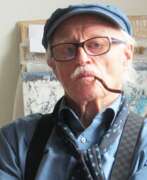

Hans Staudacher is an Austrian avant-garde painter.
At first he studied painting on his own, then attended a school of painting in Carinthia, where he began to create small format abstract works in gray-black tones. Subsequently, the artist moved to Vienna, where he painted already larger multicolored paintings. He soon became a member of the Vienna Secession; his exhibitions at the Informel were groundbreaking in Austria at the time.
Between 1954 and 1962 he traveled repeatedly to Paris, where he began to study the arts of Tachisme (or Art-Informel) and Lettrisme. These two elements shaped Hans Staudacher's later artistic legacy. Beginning in the 1960s, his work moved into an abstract style, and these works are a unique combination of lyrical informel art and abstract expressionism.
Staudacher is the founder of the Austrian organization Art Informel. Hans Staudacher was awarded the title of professor in 1976. Among his many awards are the Grand Prize of the Tokyo Biennale in 1965, the Cultural Award of the Province of Carinthia in 1989, and the Golden Honor of the City of Vienna in 2004.
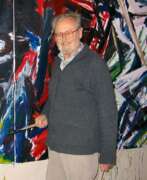

Helmut Sturm was a German painter.
From 1952 to 1958, he studied at the Akademie der Bildenden Künste, Munich. After this he joined Heimrad Prem, Lothar Fischer and Hans-Peter Zimmer in founding Gruppe SPUR, which in 1959 entered the Situationist International.
From 1980 to 1982, he was guest professor at the Hochschule der Künste, Berlin, taking over Hann Trier's class. He continued to exhibit across Germany and from 1985 to 1998 was professor at the Akademie der Bildenden Künste, Munich.
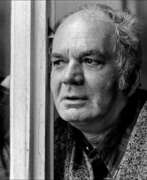

Fred Thieler was a German abstract artist known for his colorful, gestural paintings. He was born in Königsberg, Germany, and studied at the Academy of Fine Arts in Königsberg before moving to Berlin in 1945.
Thieler's early work was influenced by the Expressionist and Surrealist movements, but he soon developed his own unique style characterized by bold colors and dynamic brushstrokes. He often used a palette knife to apply paint to the canvas, creating thick, impasto layers that added depth and texture to his works.
Throughout his career, Thieler participated in numerous exhibitions in Germany and internationally, including the Venice Biennale and Documenta in Kassel. He was also a member of the influential German art group "Quadriga," which included artists such as Bernard Schultze, Karl Otto Götz, and Otto Greis.
In addition to painting, Thieler also worked as a graphic designer and a teacher. He was a professor at the Academy of Fine Arts in Berlin from 1965 to 1981, where he had a significant impact on the next generation of German artists.
Thieler's work can be found in many private collections and museums, including the Museum of Modern Art in New York, the Stedelijk Museum in Amsterdam, and the Museum Ludwig in Cologne.


Marie-Louise von Rogister was a German artist and important painter of the Informel.
From 1920 to 1924 Marie-Louise von Rogister studied painting at the Kunstgewerbeschule Kassel. A trip to Paris in 1925 was followed by a study visit to the Academie de la Grande Chaumiere in 1929/1930.
Marie-Louise von Rogister's work developed from the representational to the abstract. Her oeuvre includes paintings in oil and acrylic as well as in wax crayon and pencil. Marie-Louise von Rogister's breakthrough came in the late 1950s with her "Braided Pictures". Areas of colour are overlaid with thread-like, black structures. The so-called "Horizon Paintings" in the 1980s marked a new artistic breakthrough: clear lines and strong colours dominated the paintings. It was also through them that Informal Art came to Germany.
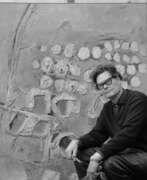

Jaap Wagemaker was one of the first Dutch artists to work in the style of materialism and established himself as a prominent representative of the international informal art movement of the 1950s and 60s. His technical categorisation of "painting of matter" has its origins in the artistic currents of Paris after 1945.
Born in Haarlem in 1906, Wagemaker showed artistic ability from a young age, studying architecture and decorative arts. He was a skilful draftsman, but his passion was painting, which led him to create more than 200 works. Wagemaker is known for his unique approach to using different materials, such as sand and wood, in his paintings.
Collectors, auctioneers and art experts appreciate Wagemaker's work for its innovative methods and contribution to the development of material painting. His work is represented in many galleries and auctions where it can be seen and purchased.
We invite all those interested in art and antiques to subscribe to our updates to learn about new products and events related exclusively to Jaap Wagemaker. Don't miss the opportunity to expand your knowledge and collections.


Alfred Otto Wolfgang Schulze, better known by his pseudonym Wols, is an eminent German artist whose work has had a significant influence on modern art. He was known for his abstract paintings, graphics and photography.
Wols' oeuvre was marked by an experimental approach and a distinctive style. The artist used unusual techniques such as spatula, drop, splatter and graphic elements to create an atmosphere of abstraction and unreality. His work was filled with emotional tension and intense effects of light and shadow.
Wols experimented with shapes and structures, creating paintings that at times seemed mystical and mysterious. He worked masterfully with contrasts and unusual compositions, which gave his works a unique and energetic quality. His work was an important contribution to the development of abstract art in post-war Germany.
Wols also showed a talent for photography, creating remarkably expressive and intriguing black and white images. He skillfully played with light and shadow to capture the moment and convey emotion.
